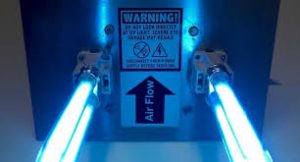The COVID-19 virus is spread two ways. Airborne Spread Fomite Spread (on surfaces)
The most recent guidance from the CDC is that most COVID is believed to be airborne and in the form of aerosols. These aerosols, from coughing, sneezing, talking and just breathing are very small and light and can remain in the air for hours.
Most people get infected in their own home. A household member contracts the virus in the community and brings it into the house where sustained contact between household members leads to infection. This short video provides an overview of how COVID is spread. This 3 minute video provides insight.
Airborne Spread
Summaries and distillation of the current research that has been completed and broadly circulated are included in a study done by a PhD at UMass that provided insight in particular to how airborne spread occurs. A formula: Exposure to Virus x Time = Infection. Work by Erin Bromage PhD provides a very insightful look at exactly how the virus spreads and the extent to which you are at risk in a variety of settings. MORE
TECHNOLOGIES
Protection from infection can be achieved using a physical approach to manage the virus vs. a biological approach. This means managing the flow of airborne droplets and insuring that surfaces are not infected.

Air Quality & Ventilation
One study of over 7,000 infected individuals found that only 1 case was contracted outdoors. It appears that fresh air and ventilation create an environment where the spread of COVID is minimized. Thus the goal is to make indoor air pure and virus-free.
Technologies incorporating ultraviolet light (UV-A) into the HVAC (heating and air conditioning systems), when combined with sophisticated air management ventilation and plexiglass dividers can significantly reduce the risk of coronavirus indoors by creating a more outdoor environment.
This technology, which is now seeking approval from the FDA, holds promise as it can be safely used in occupied public spaces to kill pathogens in the air before people breathe them in.
 Far UV-C lighting. A recent development of a UV-C light technology uses lamps that emit continuous, low doses of a particular wavelength of ultraviolet light. It is called far-UV-C and was developed at Columbia University. This technology can kill viruses and bacteria without harming human skin, eyes and other tissues, as is the problem with conventional UV light.
Far UV-C lighting. A recent development of a UV-C light technology uses lamps that emit continuous, low doses of a particular wavelength of ultraviolet light. It is called far-UV-C and was developed at Columbia University. This technology can kill viruses and bacteria without harming human skin, eyes and other tissues, as is the problem with conventional UV light.
